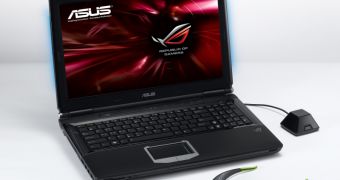Ever since the first 3D films came out, the 3D phenomenon has picked up speed, with a variety of 3D PCs and, especially, displays being unveiled, to the point where it seems like this year's amount of sold 3D laptops may reach 200,000.
By now, most every PC maker with products for the high-end market has at least previewed a mobile PC with 3D support.
Other such laptops have been selling for months already, though the overall marketing performance for the whole year may prove more or less lackluster.
According to reports, analysts have come up with a figure that is the hypothetical total 3D notebook sales for this year.
Apparently, such mobile personal computers will reach a figure of between 150,000 and 200,000 by the end of 2010.
This figure may no doubt strike some as somewhat small for a period of 12 months, but there are a few reasons why the forecast isn't more optimistic.
The main such reason is that most, if not all of them are aimed at the high-end or enthusiast market segments.
In other words, they have quite high starting prices, the likes of US$1,500-2,000, while the so-called lower-end models still make it to $1,000.
The other reason is that the industry is limited in terms of companies that actually develop content and technologies for such devices.
There is also the fact that all of them still rely on 3D glasses, products not exactly known for being comfortable or aesthetically pleasing.
The glasses themselves are also quite expensive and the laptops with polarized glasses are even more or less limited in number.
For the so-called entry-level market, Lenovo's IdeaPad Y560d sells for US$979 in some markets, while HP's Envy 3D combines NVIDIA graphics and a 17.3-inch screen for US$2,000.
Dell and ASUS should also start selling their respective laptop as well, both meant to debut this month.

 14 DAY TRIAL //
14 DAY TRIAL //